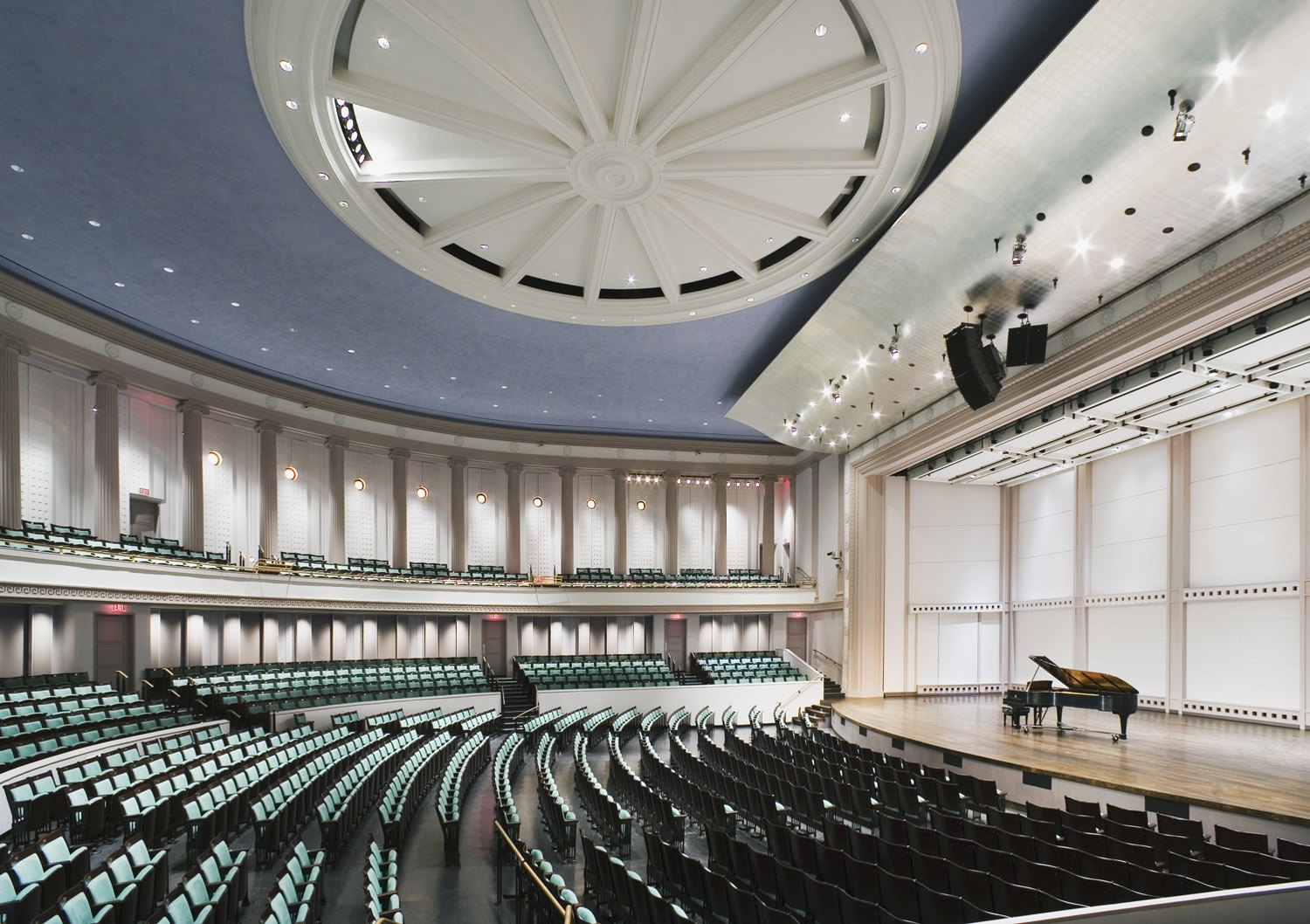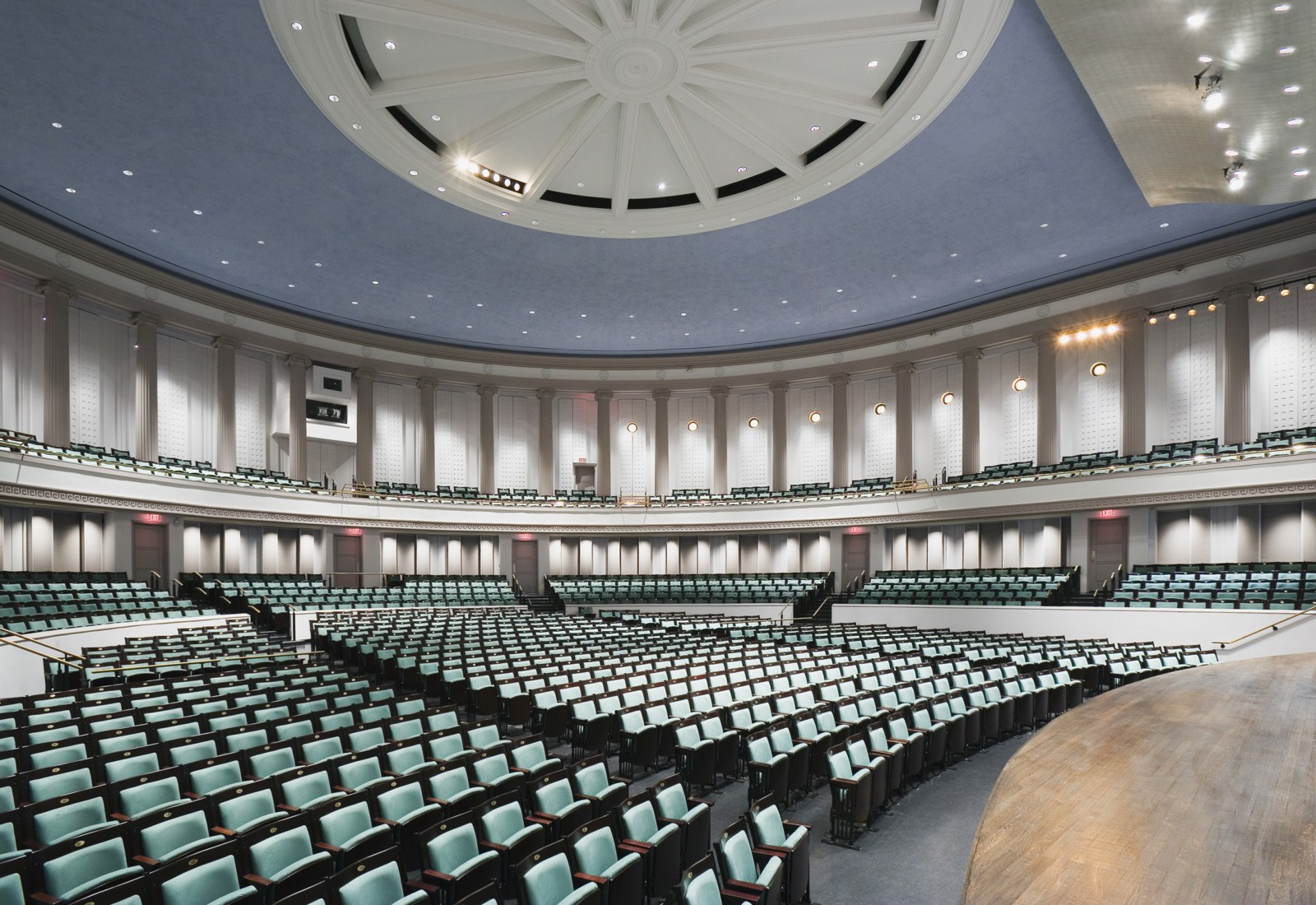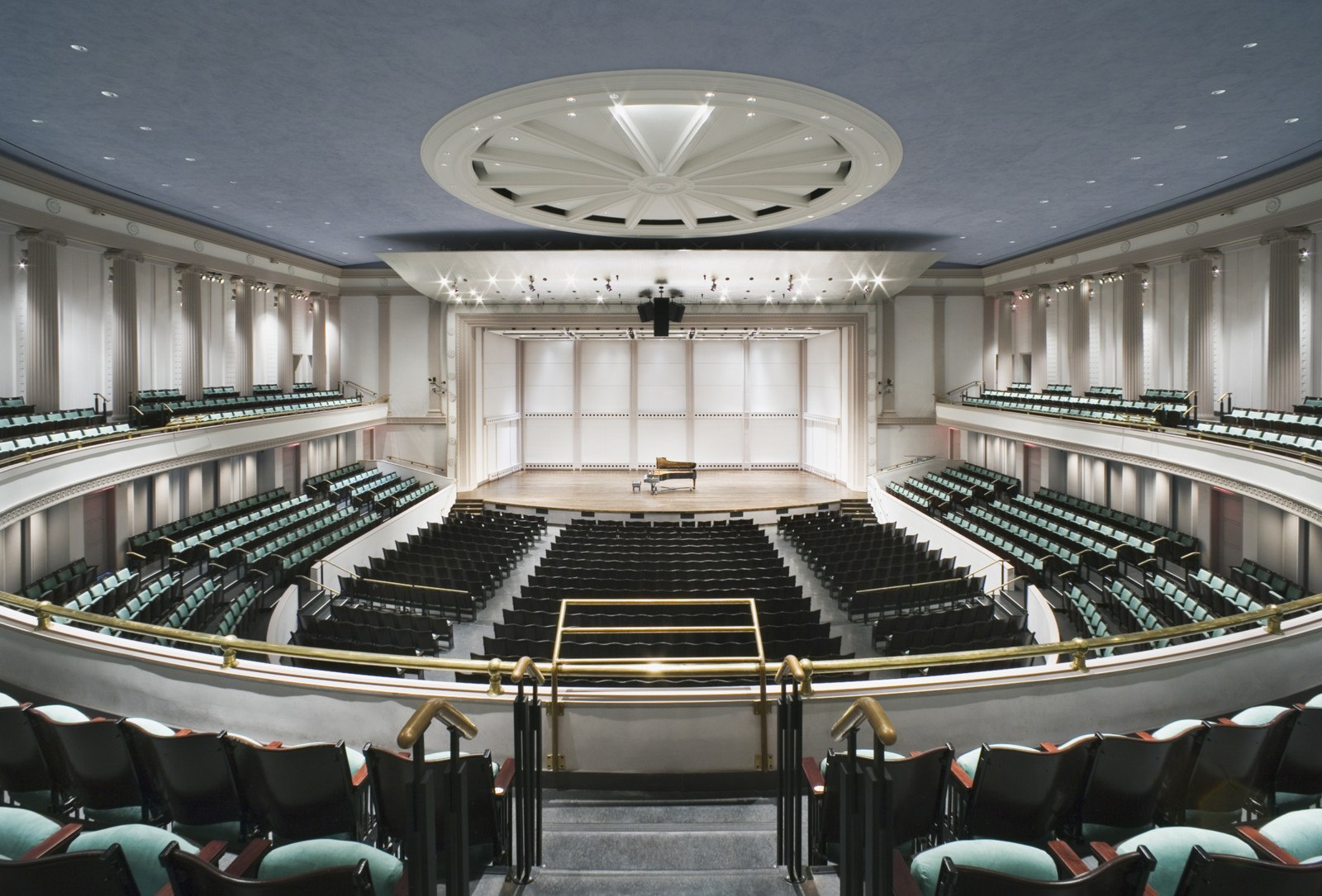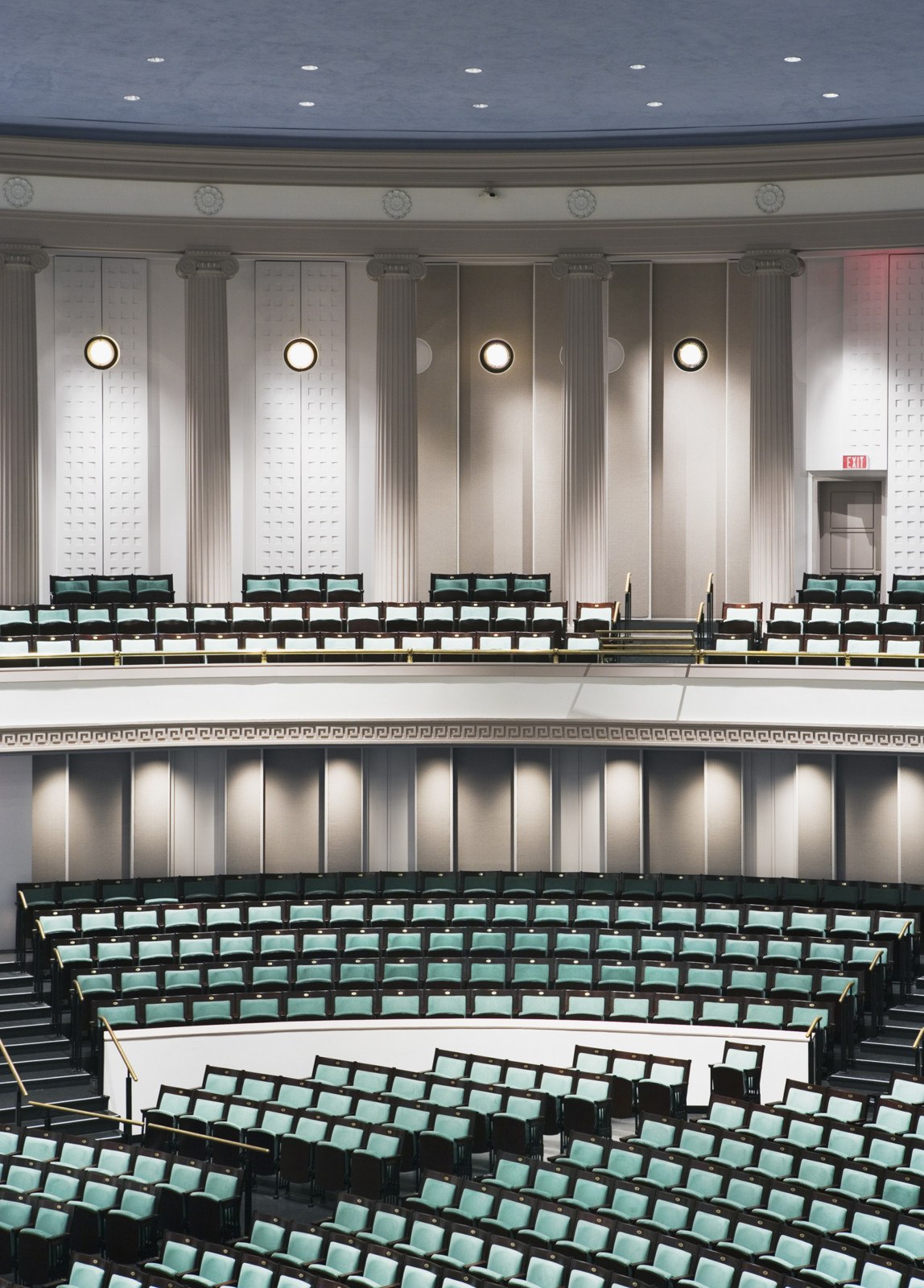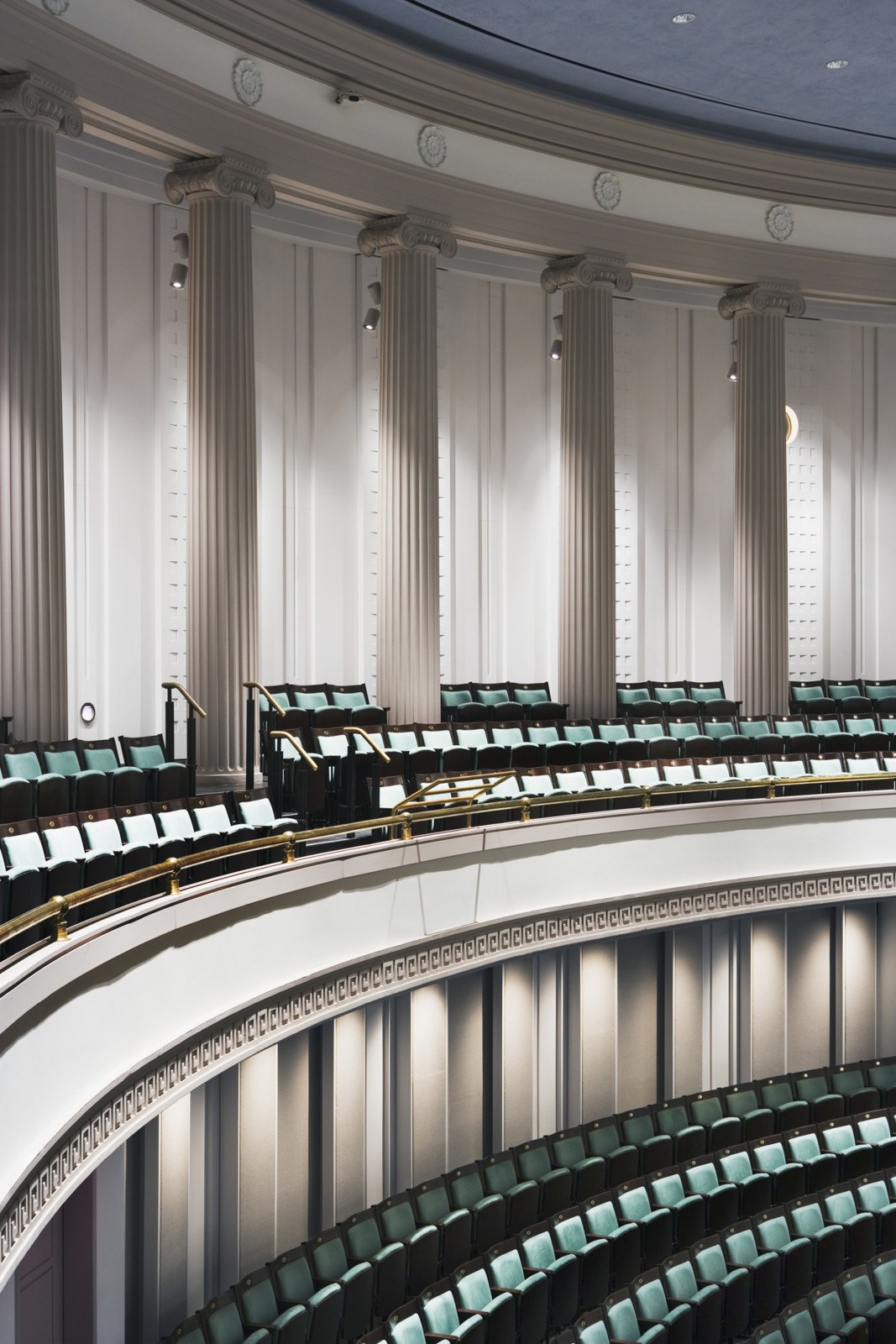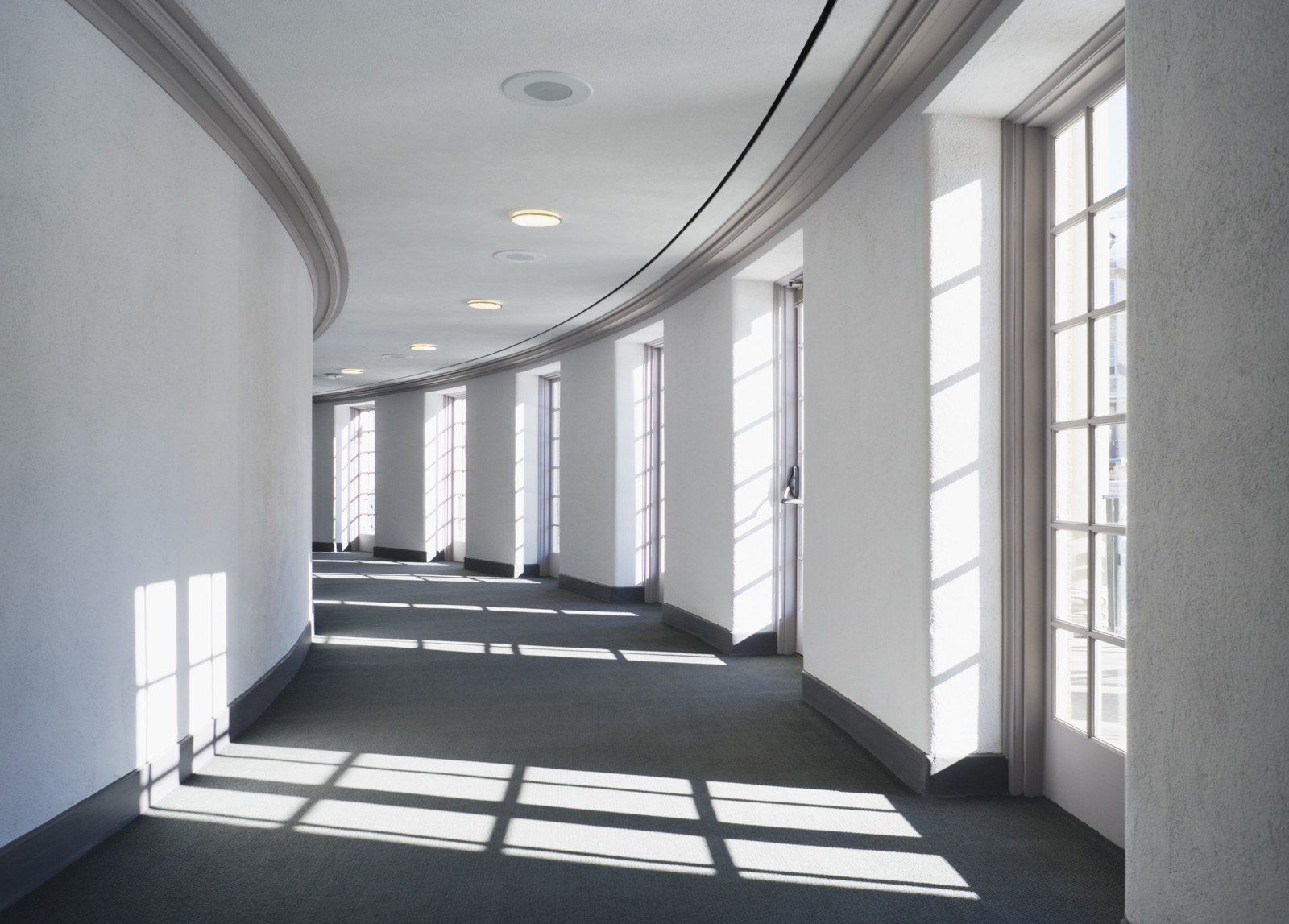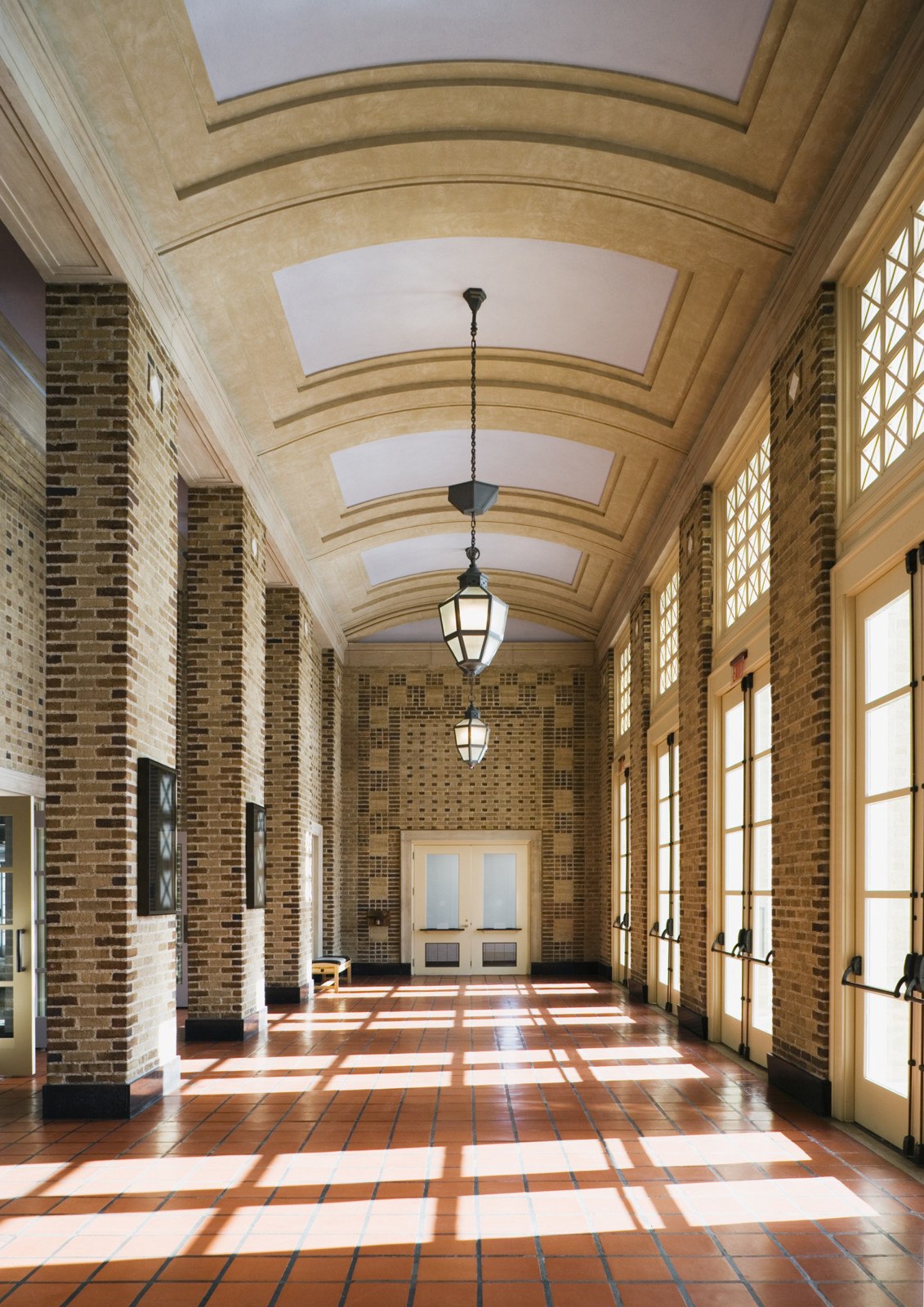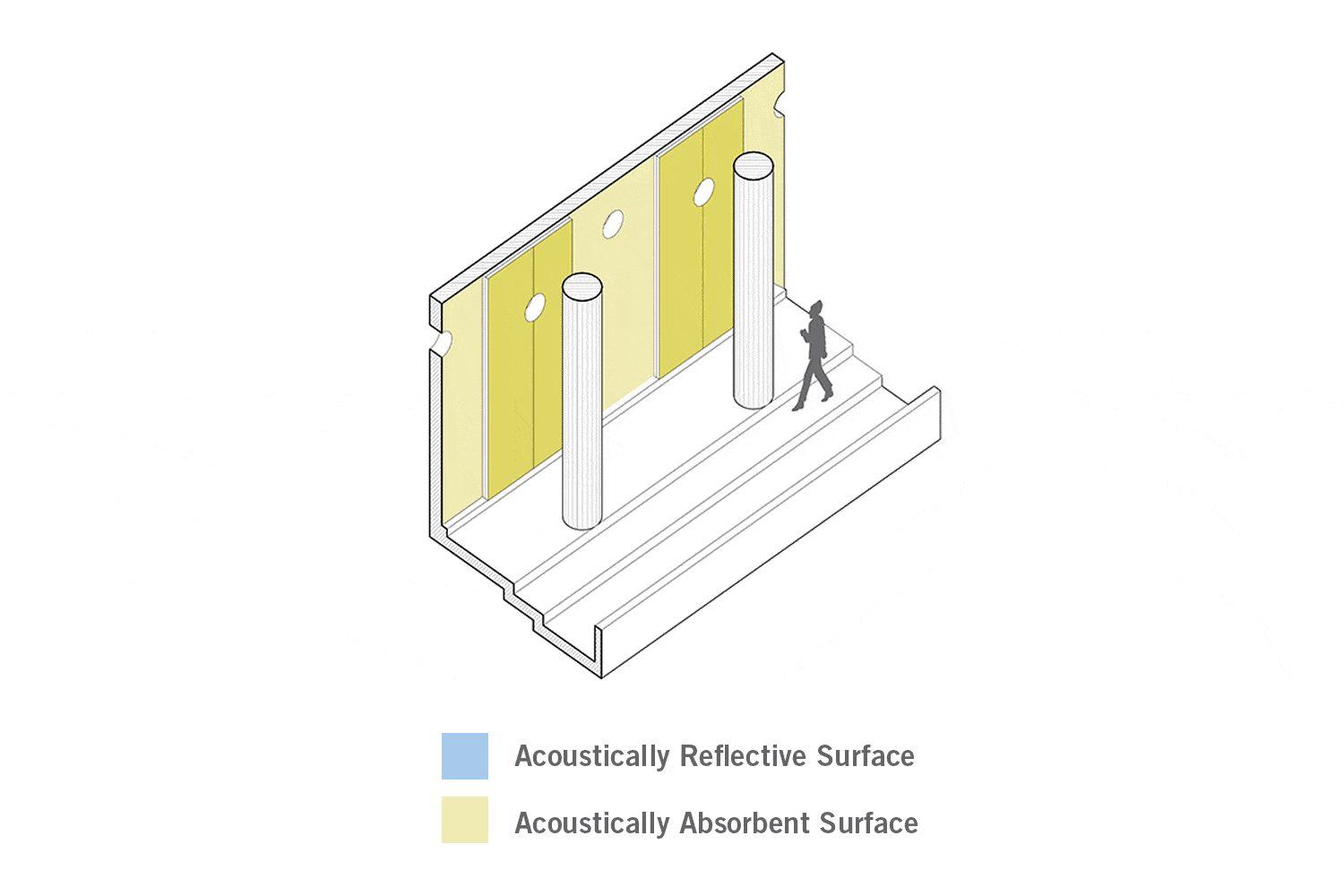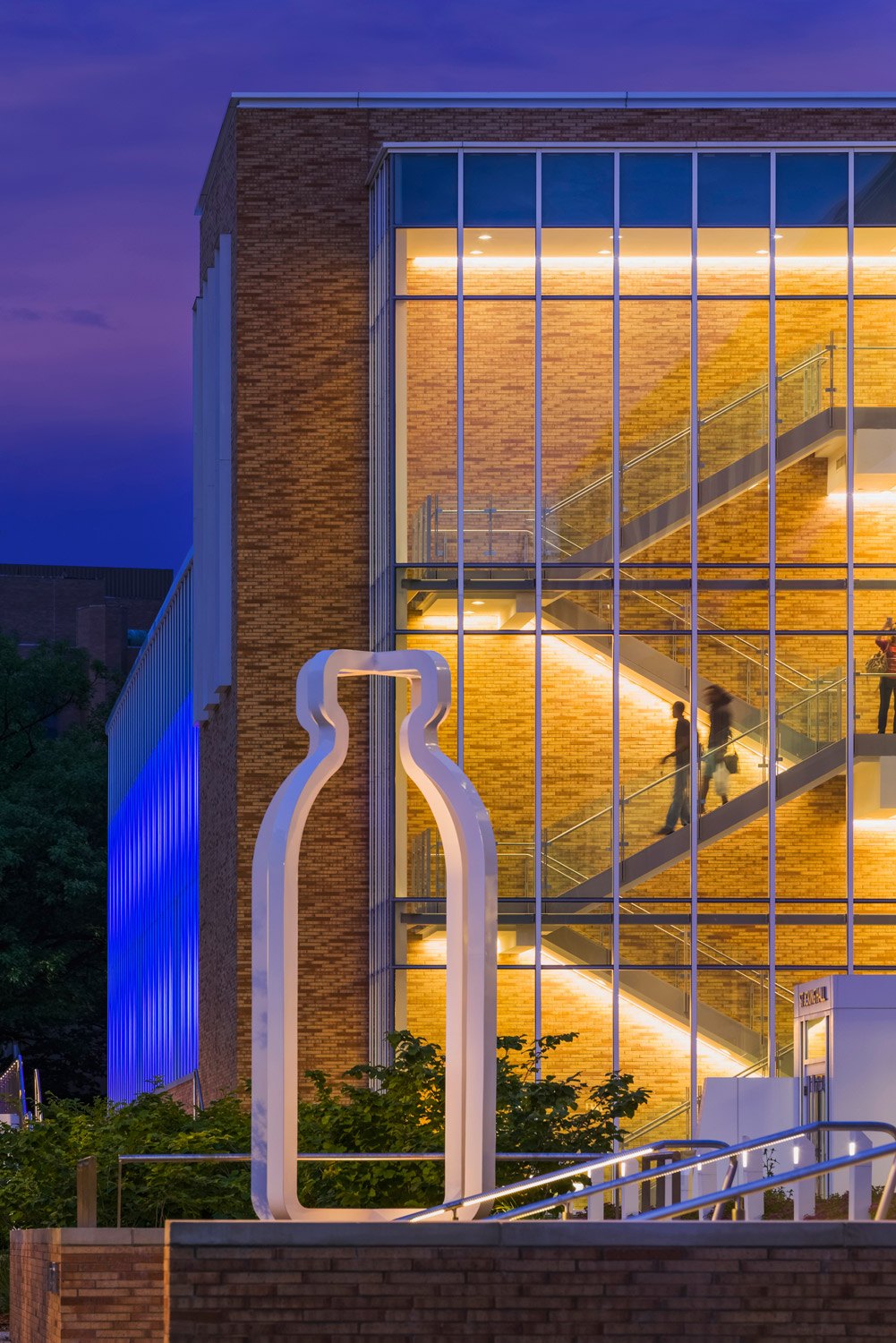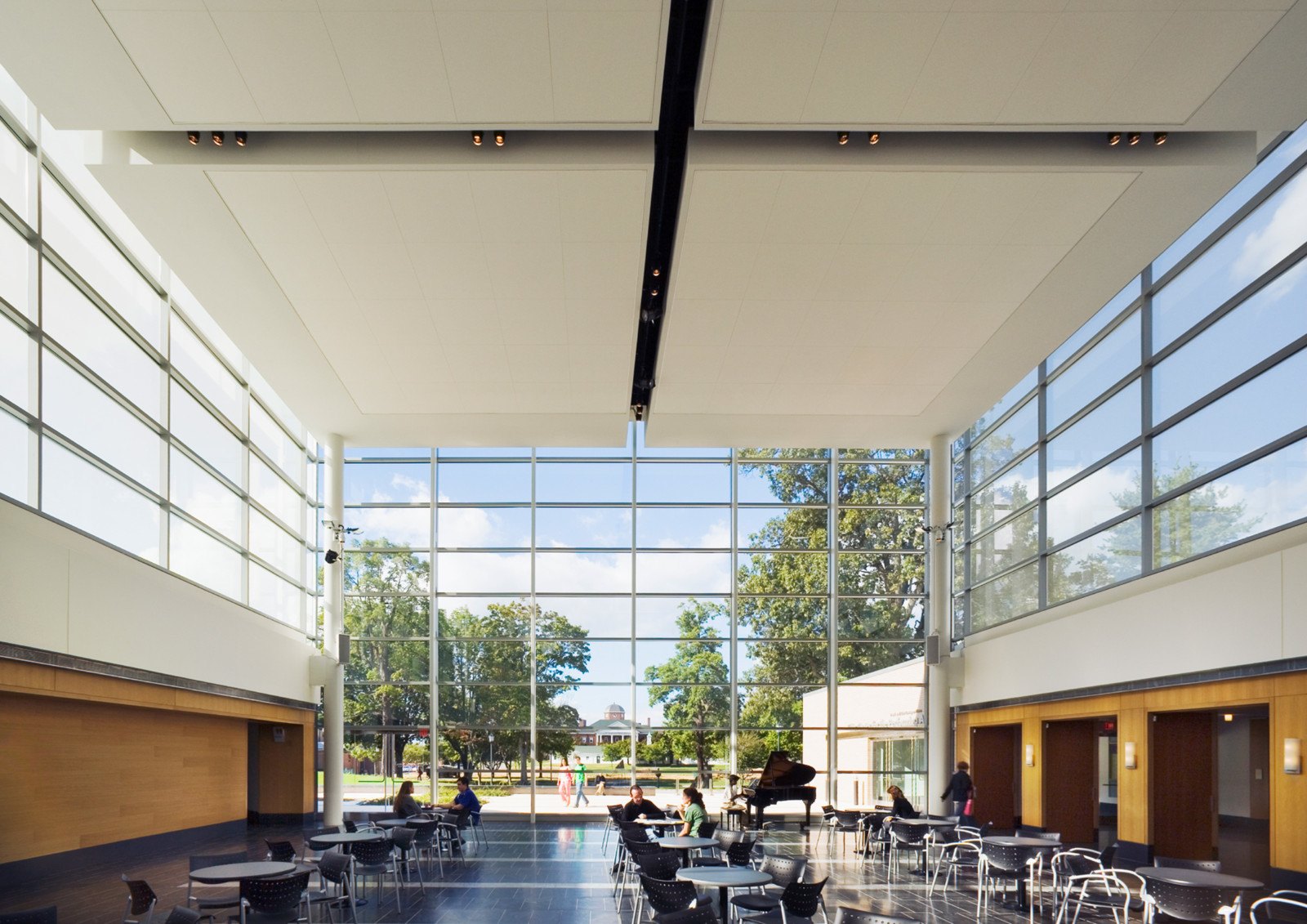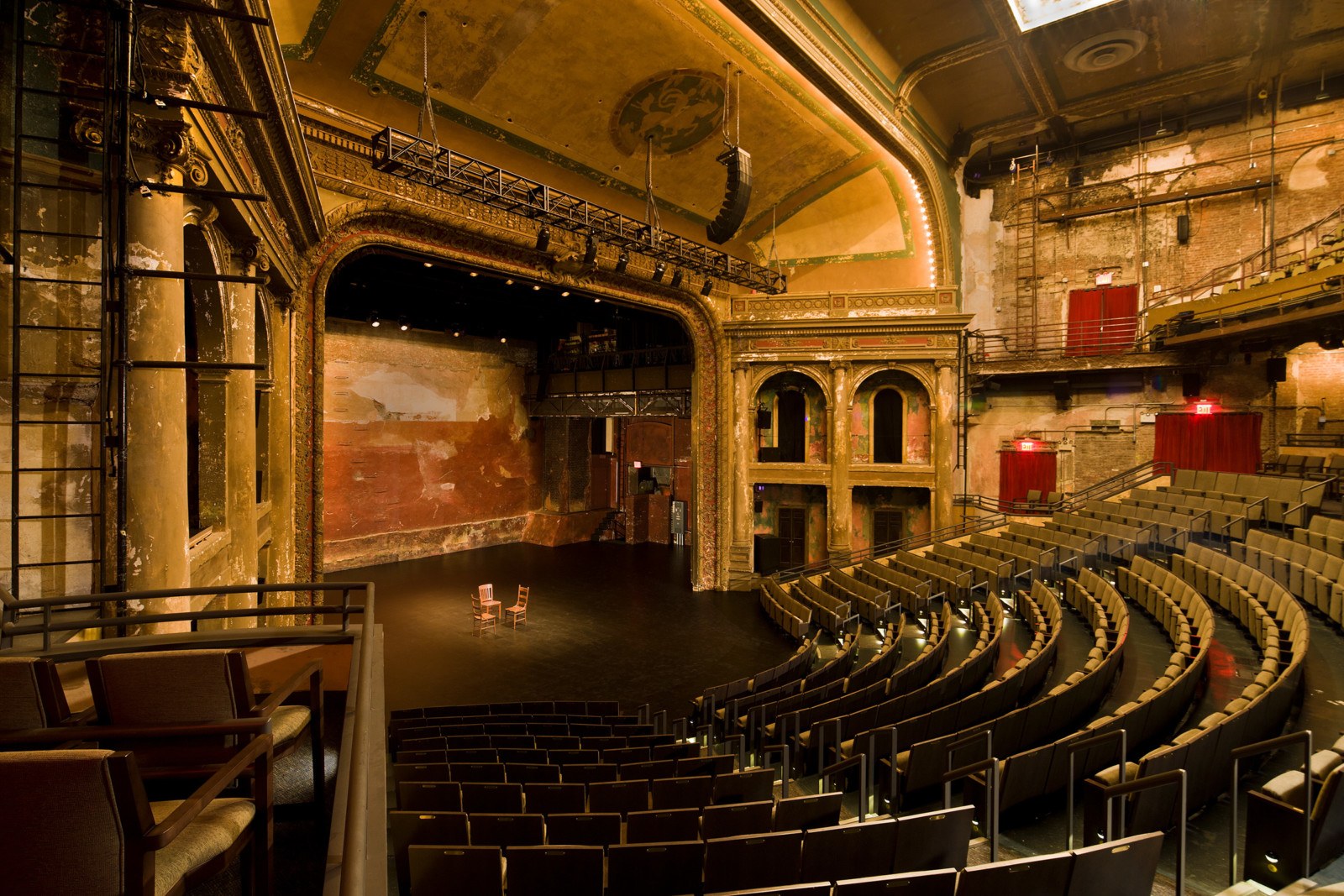
Projects
Bailey Hall, Cornell University
- Location
- Ithaca, NY
- Client
- Cornell University
- Area
- 52,700 SF
44,800 SF Restoration
7,900 SF Addition - Awards
- 2007 AIA New York State Design Award of Excellence
- 2007 Historic Ithaca Preservation Award
- Award of Excellence, New York Construction News Best of 2007 Awards
Bailey Hall was built in 1912 as an auditoria style lecture and assembly hall at Cornell University. The building was suffering from many years of deferred maintenance, and under the guidance of the NYS Construction Fund and the State Office of Parks, Recreation and Historic Preservation, it was fully rehabilitated. The challenge was to preserve the building’s unique style and detailing while bringing it into compliance with modern codes and providing for the diverse requirements of a vibrant multi-use space.
The design included a reorganization and upgrade to improve acoustical characteristics, incorporate new audio and video systems, and introduce environmental and life safety systems.The existing heating, plumbing, and electrical systems were completely replaced, and to accommodate new mechanical systems and new programmatic elements, Mitchell Giurgola designed a three-story addition at the rear of the building. The rehabilitation of Bailey Hall has ensured the continued use and future vitality of one of Cornell’s most central and treasured buildings.


